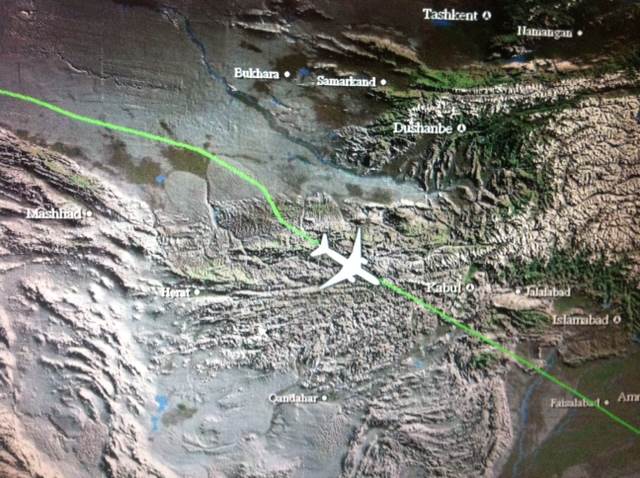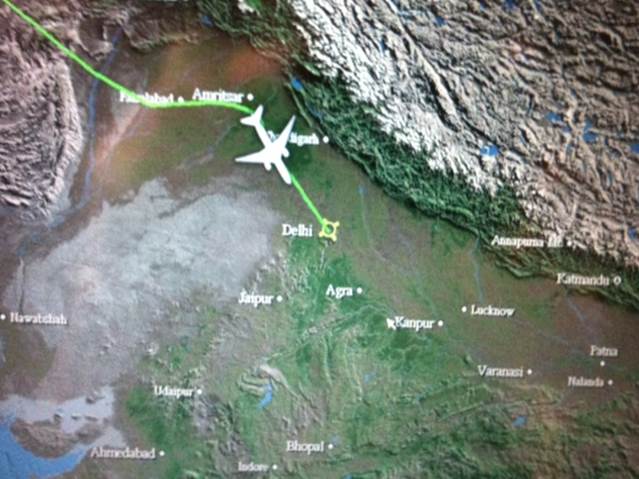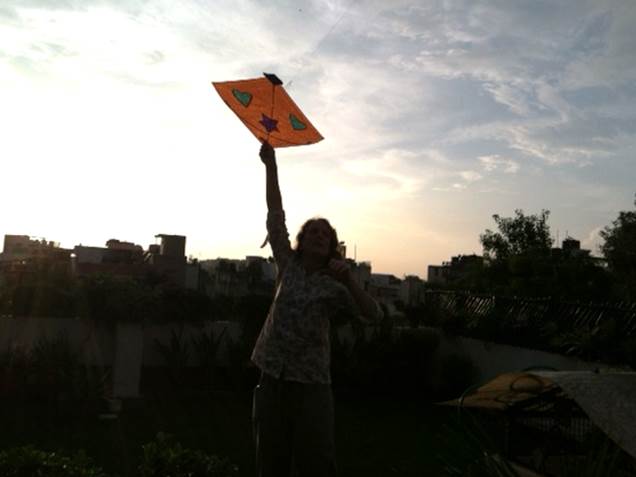
maps of region where we'll be living
August 15, 2013, Delhi: 50 lbs. and 14 hrs.
Have you ever tried to pack up all of the belongings you'll need for one year? Though this sounds tricky, I was pretty sure I could pull it off without too much trouble using my rather large rollie and my daypack.
Bag carrying the majority of belongings for one year:

Turns out I was partly right. I had plenty of space. But coming in under the 50 lb. limit set by Air India for economy class travelers was another issue – my first test-weighing at midnight the night before we left (and before I was even fully packed) came in at 55 lbs. Fortunately some creative juggling of items (and making my day pack feel like a bag full of rocks) solved this problem without too much trouble. The drive from Dublin, NH to JFK airport in New York was incredibly smooth thanks to our most excellent driver, my father.
View of NYC from bridge near JFK – our last view of the states for a while:

The flight of 14+ hours was . . . very . . . long. At least we managed to avoid getting blood clots in our legs (which apparently can be fatal) by doing our seated leg exercises and walking around periodically. As best we can tell, our flight took us over the countries of Canada, Ireland, the UK, the Netherlands, Germany, Poland, the Ukraine, Russia, Turkmenistan, Afghanistan, Pakistan, and of course India.
From the video screen in the plane, here's the overall flight path:

And while we were in the air over Afghanistan:

Approaching Delhi – check out the topographic contrast between the flat plains where Delhi is located and the Himalayas and Tibetan Plateau!

During our 1 ½ hr wait for our ride outside the airport (apparently the driver went AWOL), we called our B & B in Delhi a couple of times using borrowed cell phones. Finally our ride got straightened out. As we drove, we were mesmerized by the 100s and 100s of kites dotting the sky like convergences of hawk kettles. It turns out August 15 is an excellent day to view kites. Kite flying is part of the Independence Day Celebrations marking separation from England on August 15, 1947.
Here's a rooftop scene from the B & B with April helping to re-launch a fallen kite:

Tomorrow we catch the overnight train which will take us to Kathgodam. From there, it's about a nine hour drive to the region where we'll be living.
All is well.
- Rhine
This site created and maintained by
Dr. Rhine Singleton
Associate Professor of Biology & Environmental Science
Franklin Pierce University, Rindge, NH 03461
You can contact me at: singler at franklinpierce dot edu